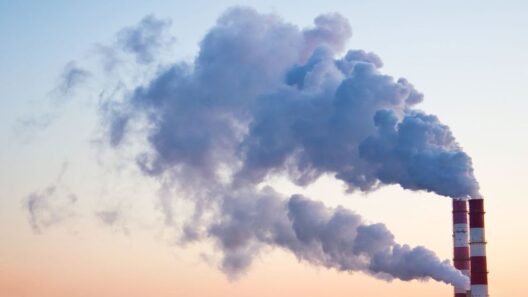As air travel continues to grow, the environmental implications of flying are becoming increasingly significant. Airplanes contribute to global warming through various mechanisms, particularly through the emission of greenhouse gases and other pollutants. Understanding these hidden emissions is crucial for assessing the full impact of aviation on the climate. In examining how airplanes contribute to global warming, we will explore the types of emissions produced, the effects of these emissions on climate change, and potential measures to mitigate their impact.
Firstly, it is essential to recognize the primary greenhouse gases emitted by aircraft. When fuel is burned in jet engines, carbon dioxide (CO2) is the most prevalent emission. This gas is a significant contributor to the greenhouse effect, whereby heat is trapped in the Earth’s atmosphere, leading to global temperature rise. In fact, aviation accounts for approximately 2-3% of global CO2 emissions, a seemingly small number but one that is growing sharply as air travel becomes more ubiquitous.
In addition to CO2, airplanes release other greenhouse gases such as water vapor, nitrogen oxides (NOx), and particulates. Water vapor can enhance the greenhouse effect at high altitudes, where airplanes operate. Nitrogen oxides contribute to both ozone formation in the atmosphere and the breakdown of methane, a potent greenhouse gas. These emissions create a complex interplay that complicates the overall impact of aviation on climate change. Research suggests that aviation could account for up to 5% of global warming when the cumulative effects of these gases are considered.
Moreover, the altitude at which aircraft operate exacerbates their climate impact. Commercial airplanes typically fly at altitudes between 30,000 and 40,000 feet, a region where the emissions have a more significant warming effect. The stratosphere is home to fewer molecules to absorb heat, and the emitted water vapor makes more effective clouds, which can trap heat. Contrails, the condensation trails formed by aircraft, can develop into cirrus clouds, further altering the Earth’s energy balance. These clouds have a thermodynamic function that contributes to warming—a relatively obscure yet vital factor in assessing aviation’s climate impact.
Another factor to consider is the efficiency of aircraft engines and the type of fuels used. Traditional aviation fuels are derived from fossil fuels, which release CO2 upon combustion. However, advancements in technology are bringing renewable aviation fuels to the forefront. Sustainable aviation fuel (SAF), made from renewable resources, offers a promising alternative, potentially leading to a significant reduction in net carbon emissions. Nevertheless, the production and widespread implementation of SAF face economic and infrastructural challenges that must be addressed to realize their potential benefits.
While technological advancements in aircraft design and engine efficiency can mitigate some emissions, demand for air travel is rapidly increasing. Low-cost carriers and globalization spur more people to fly, ultimately offsetting gains made through improved efficiencies. The rebound effect illustrates a situation where reduced emissions encourage more flights, leading to an overall increase in emissions, thereby undermining efforts to combat climate change.
Policy interventions are crucial in addressing aviation’s contributions to global warming. Currently, the International Civil Aviation Organization (ICAO) has implemented a Carbon Offsetting and Reduction Scheme for International Aviation (CORSIA), aimed at stabilizing emissions from international flights. However, critics argue that these measures may fall short of achieving meaningful reductions, as they rely heavily on carbon offsetting rather than direct emission reductions. Solutions must encompass stringent emission standards, incentivization for the use of SAF, and enhancements in public transit to reduce reliance on air travel.
Public awareness and behavioral changes also play a significant role in tackling the environmental impact of flying. People can make more informed choices about their travel decisions. Consideration of alternative transportation methods, such as trains or buses for short-haul trips, can reduce the demand for flights. When flying is necessary, travelers can opt for airlines with stronger commitments to sustainability and carbon neutrality. Furthermore, individuals can consolidate their travel plans to minimize the frequency of flights taken.
On a broader scale, fostering a culture of environmental stewardship within the aviation industry is paramount. Airlines can communicate their commitment to sustainability through transparency about their operational practices and efforts to reduce emissions. Engaging with customers about the environmental impact of flying can cultivate a more responsible flying culture. Creating awareness about eco-friendly practices during air travel—such as minimizing waste and embracing digital solutions—can contribute to sustainable aviation.
Ultimately, the nexus between aviation and global warming is complex and multifaceted. While airplanes contribute significantly to greenhouse gas emissions, the richness of this issue warrants extensive exploration. Through technological innovation, informed policies, behavioral changes, and a united public commitment to sustainability, we can work towards reducing the ecological footprint of aviation. We must acknowledge the reality of flying’s hidden emissions and prioritize addressing these concerns as we navigate the future of air travel amidst the daunting challenges of climate change.







